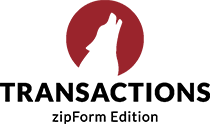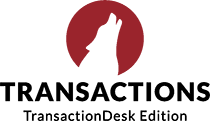
Twitter is a great place to build an online presence for your real estate brokerage. It’s a popular with a wide range of age groups, it’s easy and user-friendly, and it’s full of what Twitter calls “affluent millennials.”
But success on Twitter is not guaranteed, and it takes more than clicking “Create an Account” to get the job done. So how do you set up and maintain a perfectly professional Twitter account that will have your ideal audience flocking to you?
Here are 4 quick steps to help!
Step 1: Pick your profile
Generally, there are two types: a personal account affiliated with a brokerage, or a brokerage account. Each has pros and cons, and it really just comes down to what you think is the best approach for you and your audience.
Personal account affiliated with brokerage
Pros
- Good way to put a human face on the company
- Flexibility to post some personal content
Cons
- Doesn’t always have the authority of a brokerage account
- You’ll be on the hook to answer any brokerage-related questions that come in
Brokerage account
Pros
- Good strategy for building your brand’s authority
- Easier to share with multiple people
Cons
- No real flexibility for personal content or opinions
- Sometimes difficult for consumers to humanize
Industries vary greatly on which type of account gets the best results—but in both cases, the account represents the brokerage, so it should maintain the same level of professionalism you’d use in a meeting.
Step 2: Create the perfect bio
Once you have your account, your profile gives you the ability to describe yourself to potential followers.
Here, you can:
- Explain who you are, what you do, and what you’ve done—accurately and without bragging
- Identify your industry using carefully selected keywords and hashtags
- Include a personal detail or two if you want to and if it’s appropriate
All in the span of a few lines.
This is something that I personally always struggle with, but the trick is not to overcomplicate it. Pick three key points maximum, one or two hashtags, and try to make it sound as conversational as you can.
Step 3: Build your reputation with content
One of the biggest debates surrounding social media in general is where to draw the line on personal versus professional content.
Here’s a general guideline to help!
Good to post:
- Daily activities at your brokerage, or local community events and fundraisers
- Industry thought leadership content, even if it’s written by others
The former shows a humanized side of your brokerage that establishes authenticity and helps followers relate to your business.
The latter establishes you as an industry leader; it assures buyers and sellers that you really do know what you’re talking about, and instills confidence before they ever meet you.
Bad to post:
- Entirely business-related things (AKA not mixing up your types of content)
- Content from other social media platforms
- Highly charged or potentially controversial posts
The first one can come across as robotic and impersonal to followers.
The second one doesn’t translate well; you can post to Twitter from Instagram and Facebook, for example, but it just includes a link to the original post and may not be very compelling for your followers who don’t use those platforms.
And the third one?
Let’s just say social media is never a good place for venting, and a business-affiliated account should represent the brand, not the individual poster’s every thought. We’ve heard story after story of employees and even high-ranking executives asked to resign from their jobs over sensitive topics they Tweeted about years ago.
Just Google “fired over Tweets” and you’ll see what I mean.
Step 4: Gain more followers
Aside from sharing great content that shows followers you’re an industry leader and personable, the secret to gaining followers on Twitter is to follow other people.
Following a handful of new, relevant accounts every day keeps your account on Twitter’s radar, so it shows you to people who may want to follow you.
Just be careful not to overdo it! Your “Following” number should always be smaller than your “Followers” number. It’s an unspoken rule, but it’s true; if you’re following too many people, and have relatively few followers, people are less likely to follow you because it looks like you’re trying too hard.
Following leaders in your industry is a great way to mitigate this unspoken rule. Everyone can see who you’re following, so a well-curated “Following” list showcases that you know your industry and its issues.
A little secret: You can find more industry leaders (and some you might not have heard of) by looking through the people a known industry leader is following.
Although success on Twitter isn’t guaranteed, you can make it a lot easier with these four steps! Now we want to hear from you: What’s your Twitter success story?


